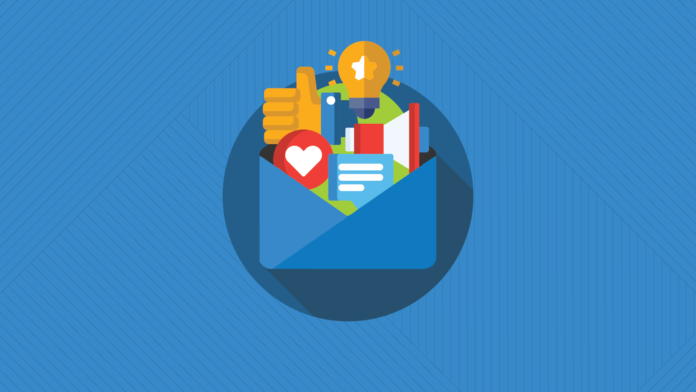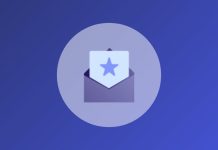Create your very own Auto Publish News/Blog Site and Earn Passive Income in Just 4 Easy Steps
If you’re in B2B, they say LinkedIn is the place to be – at least in terms of social media. Could a LinkedIn newsletter be a viable replacement for an email newsletter?
The short answer is “No.” Did you expect something else from us?
There may be some very good reasons to launch a LinkedIn newsletter. However, there are some significant differences between email newsletters and what a LinkedIn newsletter help you accomplish. Plus, there are different ways to use LinkedIn newsletters:
- The way LinkedIn wants you to do it.
- The way we think you should probably do it.
We’ll explain more as we explore LinkedIn newsletters and how they differ from email newsletters.
What is a LinkedIn newsletter?
Assuming you use LinkedIn semi-regularly, we’re willing to bet you’ve received messages from people and brands inviting you to subscribe to their newsletters. These newsletters are native to the LinkedIn platform, meaning that’s where they’re built, published, and consumed. LinkedIn newsletters have been around for a few years, but they’ve been gaining traction in 2024.
Here’s how the social platform describes its newsletters:
“A newsletter is a set of regularly published articles on LinkedIn, typically about a specific topic. You can make use of this feature to talk about a professional topic that interests you. Each newsletter on LinkedIn has its own page, a place where members can learn about the newsletter and its author, see past editions, and subscribe to or share the newsletter.”
In other words, a LinkedIn newsletter is a type of LinkedIn article that your followers can subscribe to. Proponents of these newsletters say they’ve helped their brands gain followers and increase engagement on LinkedIn.
How LinkedIn newsletters work
We’ll spare you the step-by-step instructions in this article, because those are easy to find. But you can check out Andy Crestodina’s tips in the video below.
What you need to know is that you basically create a LinkedIn newsletter much like you might lay out a blog post, adding copy, links, visuals, and calls to action. It’s up to you what goes into your LinkedIn newsletter, but you’ll need to give it a name and focus on a certain topic.
Then, you’ll need to convince your LinkedIn followers to subscribe to it because current followers will not be automatically subscribed. It’s also possible for someone to subscribe to your LinkedIn newsletter without being a follower.
When you publish a LinkedIn newsletter, subscribers will get an email notifying them of the latest edition, a notification on LinkedIn, and they may see it in their feed. After your LinkedIn newsletter launches, you’ll also be able to see some basic analytics for each edition and performance over time.
LinkedIn vs email newsletters in your marketing mix
The most important thing to realize is that LinkedIn and email newsletters represent two different strategies: your social media strategy and your email marketing strategy. That said, it’s likely they’ll serve a similar purpose: content distribution to a targeted audience.
In marketing, different media and methods are often classified as four distinct types: Owned, Earned, Shared, and Paid.

- Owned media is best described as your articles, reports, landing pages, videos, etc. – anything that lives on your website. You’re in control of it.
- Earned media is most often connected to public relations and media relations. It’s the coverage you get as well as good old-fashioned word-of-mouth marketing and even customer reviews on other sites.
- Shared media is essentially social media. It’s how you share/distribute your Owned media or interact with your target audience using content that’s built for a specific social media platform.
- Paid media is self-explanatory. It’s your digital ads, promoted posts, sponsored content, etc. – any time you pay to reach an audience.
There is definitely some overlap between these types of marketing media (hence the Venn diagram). For example, there are ways to use social as Paid media, and you could classify followers sharing your content as Earned media. Owned content often feeds into the other three medias. So, where does email marketing fit into this model?
Why we need another media type
Many marketers would describe the email channel as Owned, but that’s not entirely accurate.
You don’t exactly own your email list since contacts should be able to unsubscribe at will. Plus, as we are quite familiar, you don’t have complete control over the way different email clients like Outlook and Gmail display your campaigns or how mailbox providers choose to filter what you send.
Chad S. White, author of Email Marketing Rules, wrote about this conundrum. He suggests a different classification for email – Granted media. Chad includes other forms of messaging here too, such as SMS and MMS, as well as organic search marketing (also known as search engine optimization or SEO):

“The defining characteristic of granted media is that it is brand content distributed via an open platform, which gives the platform great reach but at the cost of having many masters, which are active participants in the channel.”
Chad S. White, Author, Email Marketing Rules
Another good way to classify email and mobile messaging channels could be Permission media. While SEO doesn’t fit here, permission-based marketing accurately describes email and SMS marketing experiences. Customers and contacts opt in, giving you permission to deliver content and campaigns to their inboxes.
Challenges with email and LinkedIn newsletters
The point we’re trying to make here is that email and social media are entirely different worlds. However, they intersect at the point of distributing content to the right audience.
The problem with social media is that organic reach on these closed platforms has dwindled to a trickle. In fact, if you’re sharing links to your website in social posts, the algorithms are designed to reduce impressions/reach. That means most of your followers won’t even see what you’ve shared, and it’s why you’ll find major brands with 400k followers only getting LinkedIn reactions in the double digits.
The problem with email marketing is that inboxes are crowded and improving email engagement is challenging. It’s easy to miss email newsletters among the many promotional, transactional, and personal messages (not to mention spam) in the inbox.
Those two problems are exactly why LinkedIn newsletters are so attractive to many marketing teams. They help get your brand’s content in front of more eyeballs while promising to improve reach and engagement on LinkedIn.
Our friends at Sinch Mailgun recently launched a LinkedIn Newsletter called Mailgun News. So, even top email brands see the value of this social media tactic. One significant benefit over email is that your subscribers on LinkedIn can react, comment, and interact with your newsletter on the platform. This creates a stronger community while helping you learn a little more about your audience.
But be aware… LinkedIn newsletters come with a bit of a catch.
Why LinkedIn really wants you to use their newsletters
The reason organic reach has declined and social media is no longer an ideal channel for publishing content is clear. Maybe you’ve also recently noticed that the way LinkedIn displays links to external content in newsfeeds has changed. It shows much smaller visuals from the content. That is… unless you pay to promote it.
 Organic shared link vs promoted post on LinkedIn
Organic shared link vs promoted post on LinkedIn
These social platforms want their users to stay on the platform where they’re more likely to interact with paid ads, which are the business model behind social media.
The same is true for Google. That’s why it delivers answers at the top of organic search results so that users don’t have to click through to learn more. It’s also the idea behind Google’s AI-powered generative search, and why Head of Search Liz Reid said to “let Google do the Googling for you.”
But we digress… Back to LinkedIn newsletters.
LinkedIn wants you to create content on its platform that keeps its users on LinkedIn and has other benefits for them (not always you). For one thing, maybe you’ve noticed LinkedIn articles showing up in search results more often. Unlike posts, search engines like Google are indexing articles and LinkedIn newsletters.
Maybe you see this as a good thing. But what’s really happening is you’re helping LinkedIn with search visibility when you could be helping your own site. You may be taking what could be Owned content and turning it into Shared content.
If that’s what you want to do, fine. But maybe the real question you should be asking is “Why not both?”
4 strategic recommendations for LinkedIn newsletters
We aren’t here to tell you not to use LinkedIn newsletters, nor do we believe that email newsletters are the only channel where you should distribute your brand’s content. There could be a way to get the best of both worlds.
Here are a few tips for using LinkedIn and email newsletters together:
1. Think content syndication, not publication
If you’re publishing longform content on LinkedIn that also lives on your website, consider only posting part of it. Pick a jumping off point in the article that generates curiosity and drives users to your blog for the rest. If you watched Andy Crestodina’s how-to video above, you’ll see he also recommends this approach.
At the very least, make sure your original articles live on your website for a time before you syndicate them on LinkedIn as well as Medium and other places.
When you send email newsletters, the most common strategy is to write teasers of your articles, announcements, launches, and other content. You write creative CTAs that encourage the click. Your LinkedIn newsletter should function the same way.
Since your LinkedIn newsletter subscribers will get an email and in-app notification, there’s less of a concern about reduced reach from an algorithm. So, don’t worry about adding links.
2. Reduce content redundancy
Avoid distributing the same content through LinkedIn and an email newsletter at the same time. You may have some dedicated fans who subscribe to both channels. If you can deliver a different experience, they’re more likely to stay subscribed to both.
If you have enough fresh content, you can divvy it up between channels. Or you could have different frequencies for email and LinkedIn newsletters. One may be a monthly roundup and the other a weekly update.
Another good way to keep things fresh is to divide the responsibilities among marketing teammates. A social media specialist can handle the LinkedIn newsletter while an email marketer takes care of the inbox version. Just be sure to knock down those silos and communicate with each other about what’s being distributed and when.
3. A little exclusivity just might work
Here’s the part of the article where we contradict ourselves a little bit. Honestly, there’s no one right way to do anything. You’ve got to find a strategy that works for you.
In some cases, creating content specifically for a LinkedIn newsletter may be exactly what you need. Native content is the way to go if you want to get the most out of social media these days.
For example, you may have a thought leader in your organization who could write a dedicated LinkedIn newsletter every week. You could also use a LinkedIn newsletter to curate and share relevant content from other sources in your industry.
Of course, these same strategies can work for your email newsletter. Giving people exclusive content they won’t find anywhere else gives them a reason to subscribe.
4. Don’t put your eggs in one basket
Unlike your email list or a platform like Substack, you can’t take your audience with you. Don’t ever forget that LinkedIn is the one in control. They can change the rules of the game at any time. Relying too much on a LinkedIn newsletter could become a problem.
A lot of small businesses and online influencers who built followings on platforms like Facebook are now regretting it. You need to invest in your Owned media properties, including your website and original content.
These days, it’s wise to diversify your sources of web traffic – because you can’t rely on any one channel – even (and maybe especially) organic search. If you’re too dependent on a single source, you may find yourself in a sticky situation. That’s why omnichannel communication is so important. LinkedIn newsletters are simply an additional touchpoint in your omnichannel marketing mix.
LinkedIn newsletters vs email newsletters: What’s the difference?
Welcome to those of you who skipped the rest of the article to find this comparison table. We realize that this is kind of like those recipe blog posts that go on and on before giving you the goods. Sorry, but we had some stuff to get off our chests.
Here’s a clear breakdown of how LinkedIn newsletters differ from email newsletters:
| Feature | LinkedIn newsletters | Email newsletters |
| Contact ownership | You cannot take LinkedIn contacts off the platform. | Your email list is an asset you can use with many service providers. |
| Automation | Can be scheduled, but no other automation capabilities. | Email automation includes nurture sequences, drip campaigns, and triggered messages. |
| Segmentation | No segmentation, but you could have different newsletters for various audiences. | Email lists can be segmented in many ways: demographics, psychographics, purchase behaviors, etc. |
| Personalization | No personalization for LinkedIn newsletters. | Emails can be personalized in many ways, including using a contact’s name or with specific content recommendations. |
| Engagement | May help improve engagement and grow your following on LinkedIn. | Getting good email engagement is tough but can be strategically improved. |
| Design | You can easily add your own visuals but must use LinkedIn’s WYSIWYG editor. | Much more diverse design options with custom email code, but you need to consider email client rendering issues. |
| Analytics | Basic stats on views, subscriber growth, and subscriber demographics. | Most email service providers (ESPs) offer robust reporting and audience insights, which become valuable first-party data. |
| Community | Subscribers can comment and react on LinkedIn while allowing you to interact with your audience. | Subscribers may be able to reply, but you’ll need someone to respond, and recipients won’t be able to interact with each other. |
Why email newsletters matter more than ever
While there may be good reasons for your marketing strategy to include a LinkedIn newsletter, there’s no denying the power of the email channel. Sinch Mailgun’s report Email and the Customer Experience found around 75% of global consumers prefer the email inbox for both transactional and promotional messages.
Here’s something to think about… How does LinkedIn entice people back to its platform to view your newsletter? They send those subscribers an email! If LinkedIn knows that email is an ideal way to drive traffic, you should be doing the same.
As channels like organic search, social media, and paid digital put the squeeze on brands and content creators, email remains a constant source of success. That’s likely why Sinch’s Customer Connections report found that 92% of U.S. businesses it surveyed use email to reach customers. Compare that to 56% who are using Facebook/Instagram messaging and 47% who use other social platforms like LinkedIn and Twitter/X.
If you’re looking for a way to create engaging email newsletters, check out what Sinch Mailjet has to offer. Beyond a variety of templates, you’ll also find solutions for segmentation and A/B testing as well as tools to build forms and landing pages.
And if you need a way to review and optimize your email newsletters, Sinch Email on Acid is a trusted email quality assurance platform. Use it to preview how your emails render on 100+ clients and devices before you hit send.
![]()
Author: Kasey Steinbrinck
Kasey Steinbrinck is a Sr. Content Marketing Manager for Sinch Email, which includes the brands Email on Acid, InboxReady, Mailgun, and Mailjet. He understands how email and content work hand-in-hand to create a strong strategy. Kasey has also spent time working in traditional media, e-commerce marketing, and for a digital agency.
Create your very own Auto Publish News/Blog Site and Earn Passive Income in Just 4 Easy Steps







